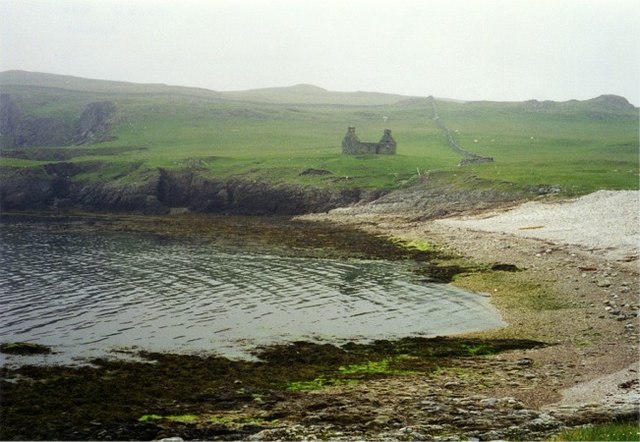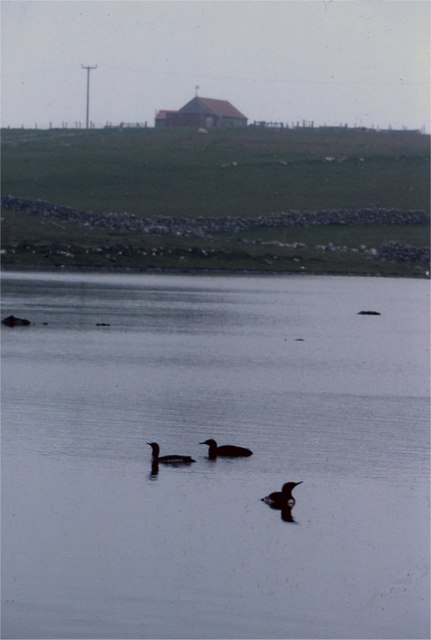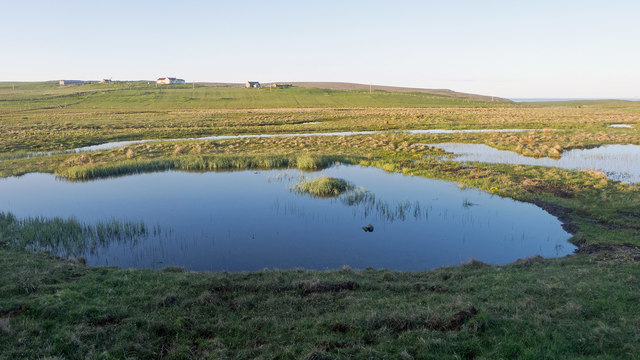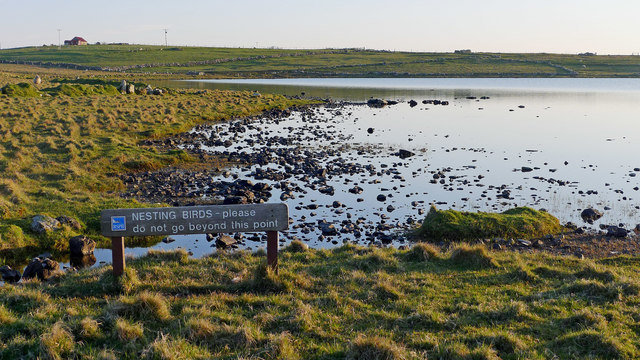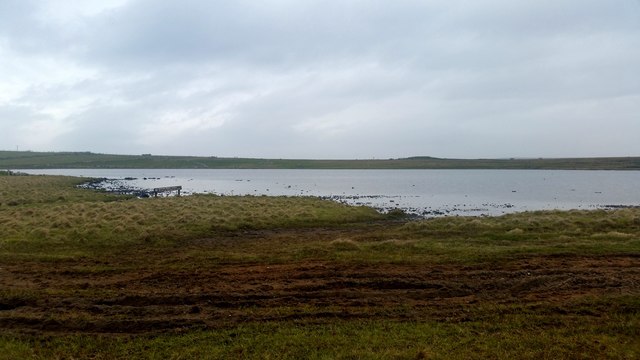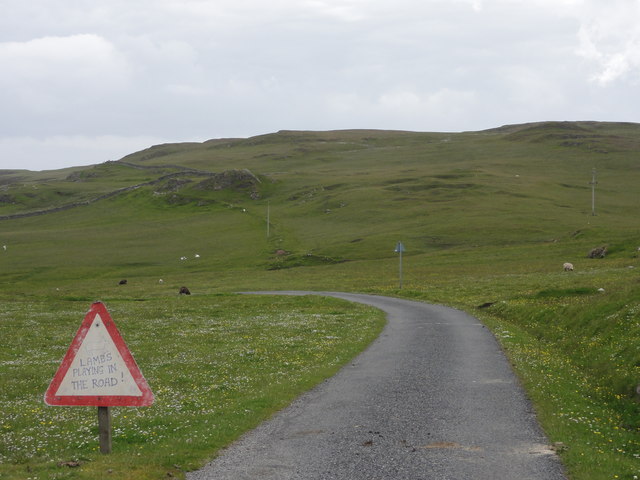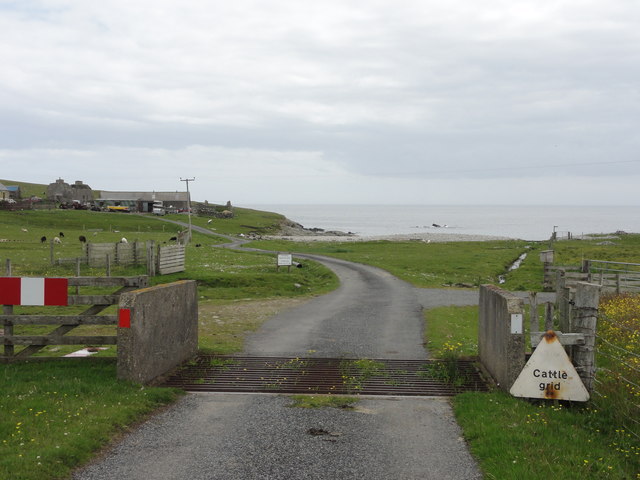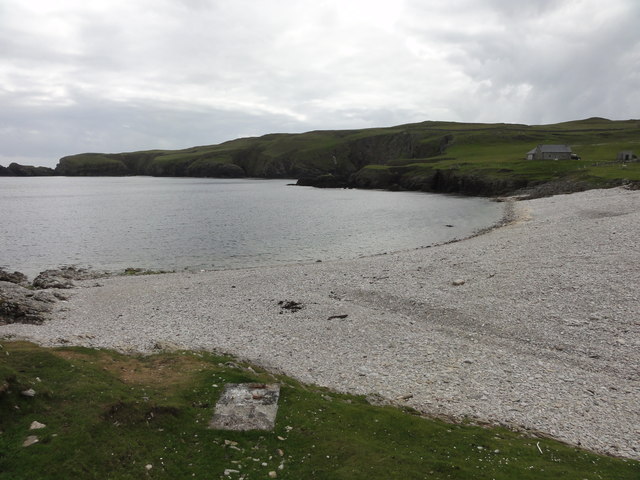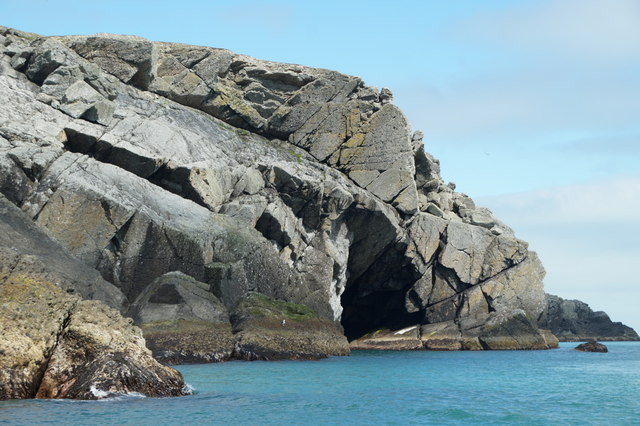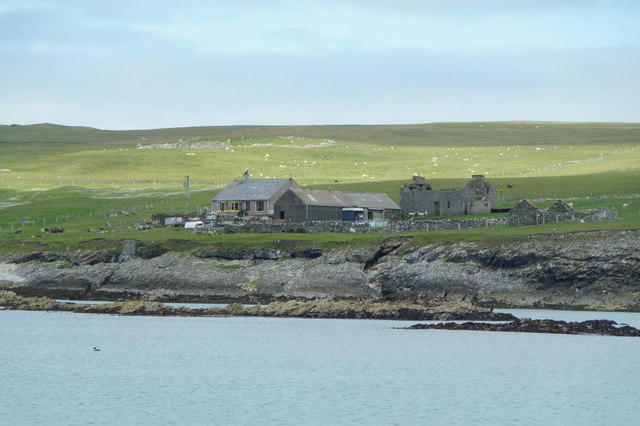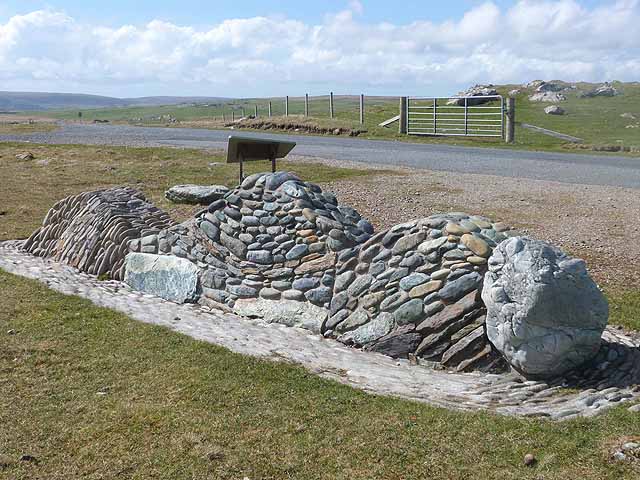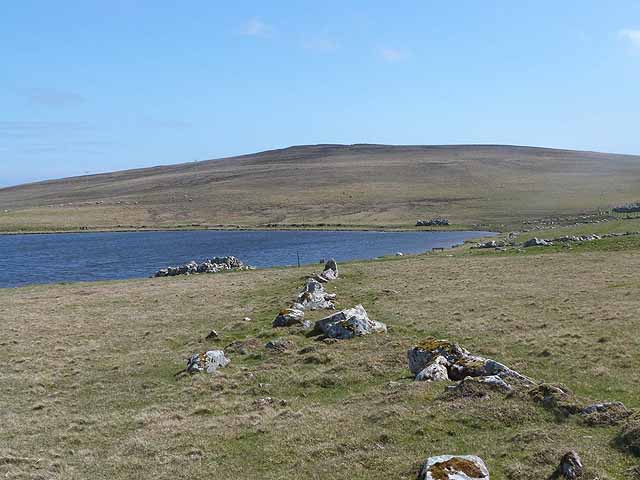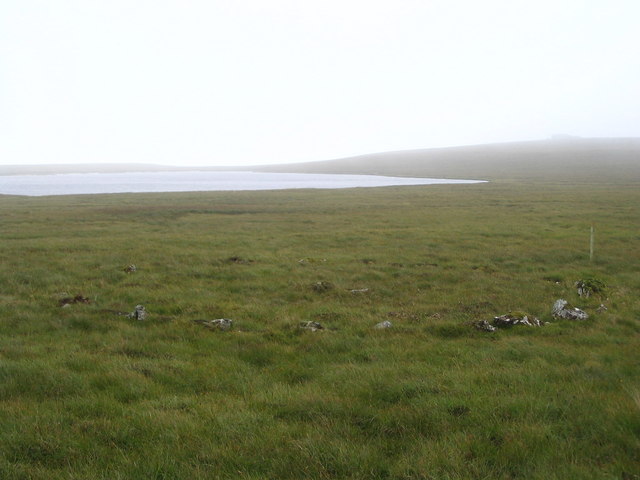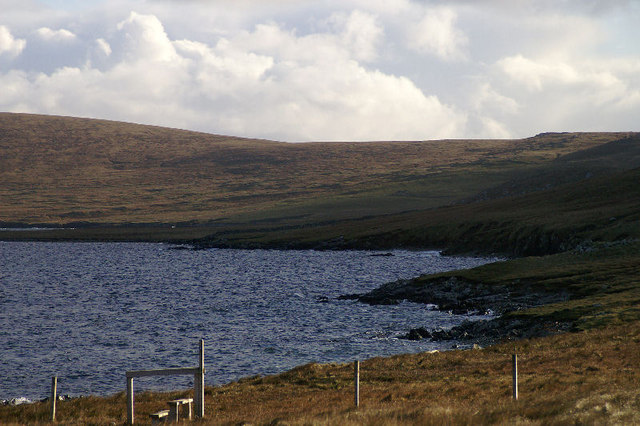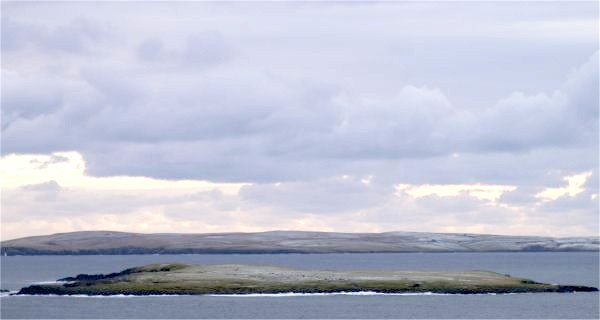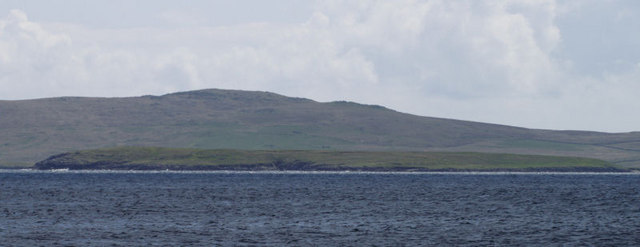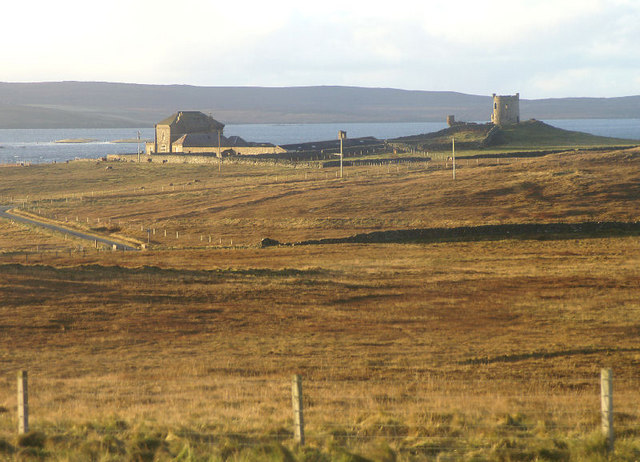Mussi Geo
Coastal Feature, Headland, Point in Shetland
Scotland
Mussi Geo
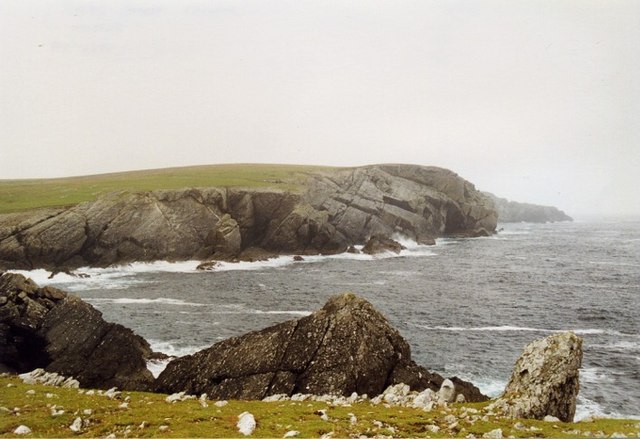
Mussi Geo is a prominent coastal feature located in the Shetland Islands, an archipelago in Scotland. It is classified as a headland, also known as a point, due to its elongated and protruding shape into the surrounding sea.
Situated on the west coast of the Shetland Mainland, Mussi Geo is known for its striking cliffs and rugged terrain. The headland is characterized by its steep, rocky slopes that drop dramatically into the North Atlantic Ocean. These cliffs are composed of layers of sedimentary rock, showcasing the area's geological history.
Mussi Geo offers stunning panoramic views of the surrounding coastal landscape, including the open sea and nearby islands. The headland is also home to a diverse range of seabirds, making it a popular spot for birdwatching enthusiasts. Species such as puffins, gannets, and guillemots can often be spotted nesting and diving in the waters around the headland.
Visitors to Mussi Geo can explore the area by foot, following the coastal path that winds along the cliff edges. This path provides access to various viewpoints and allows for an up-close experience with the breathtaking scenery. However, caution is advised as the terrain can be challenging and the cliffs are unfenced.
Overall, Mussi Geo stands as a captivating coastal feature in the Shetland Islands, showcasing the region's natural beauty and offering a unique viewpoint of the rugged coastline and abundant wildlife.
If you have any feedback on the listing, please let us know in the comments section below.
Mussi Geo Images
Images are sourced within 2km of 60.601441/-0.79827405 or Grid Reference HU6591. Thanks to Geograph Open Source API. All images are credited.
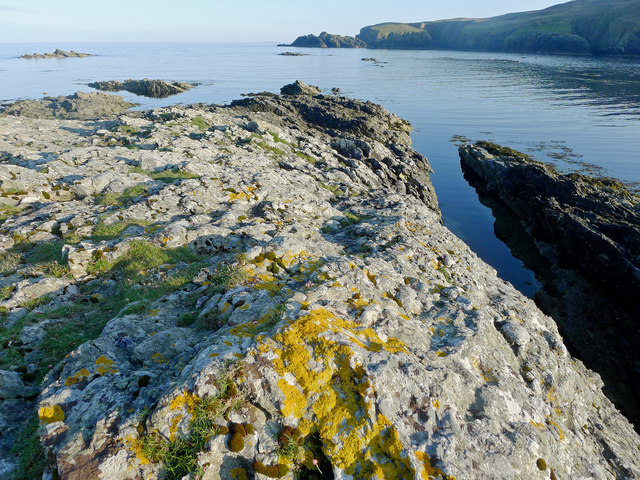
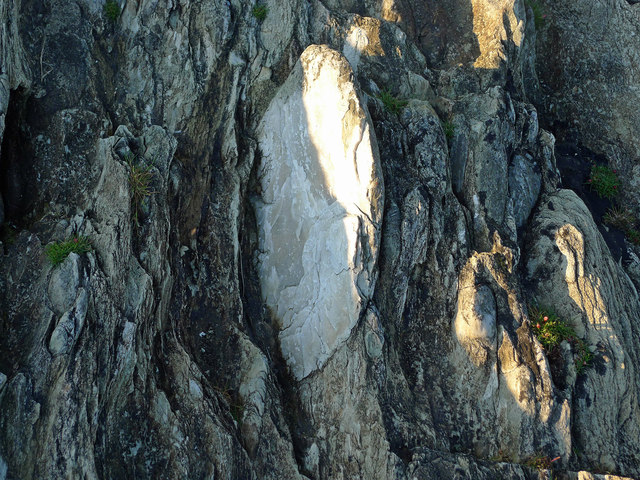
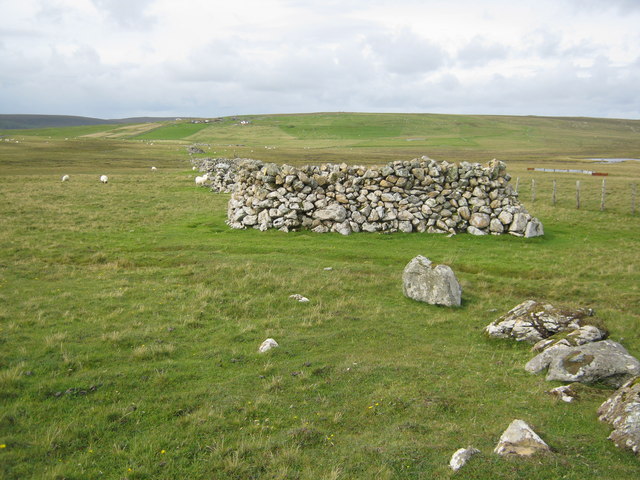
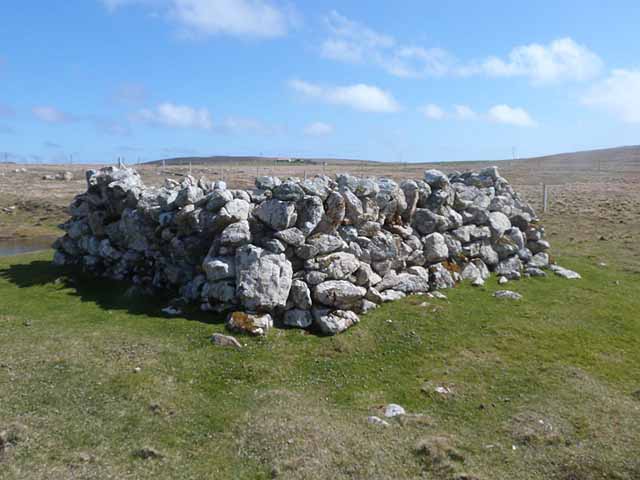
Mussi Geo is located at Grid Ref: HU6591 (Lat: 60.601441, Lng: -0.79827405)
Unitary Authority: Shetland Islands
Police Authority: Highlands and Islands
What 3 Words
///taxed.greed.icons. Near Houbie, Shetland Islands
Nearby Locations
Related Wikis
Haltadans
Haltadans, also known as Fairy Ring or Haltadans stone circle, is a stone circle on the island of Fetlar in Shetland, Scotland. This site is a ring of...
Fetlar
Fetlar (Scots: Fetlar) is one of the North Isles of Shetland, Scotland, with a usually resident population of 61 at the time of the 2011 census. Its main...
Funzie Girt
Funzie Girt (; Scots: Funyie Girt "Finns' dyke") is an ancient dividing wall that was erected from north to south across the island of Fetlar in Shetland...
Haaf Gruney
Haaf Gruney is a small island in the north east of the Shetland Islands. == Geography and geology == The island is between Unst and Fetlar which are to...
Urie Lingey
For other islands with similar names, see Linga (disambiguation) Urie Lingey is one of the Shetland Islands. It is between Fetlar and Unst, and Yell is...
Brough Lodge
Brough Lodge is a 19th-century Gothic mansion on Fetlar, one of the Shetland Islands, in northern Scotland. Built by the Nicolson family, who were responsible...
Hamars Ness
Hamars Ness is a headland on the island of Fetlar in Shetland, Scotland. The name is from the Old Norse Hamarsnes meaning "craggy headland". A ro-ro ferry...
Uyea, Unst
Uyea (Scots: Uyea) is an uninhabited island, lying south of Unst in Shetland, Scotland. == History == The island was inhabited as early as the Bronze Age...
Nearby Amenities
Located within 500m of 60.601441,-0.79827405Have you been to Mussi Geo?
Leave your review of Mussi Geo below (or comments, questions and feedback).
